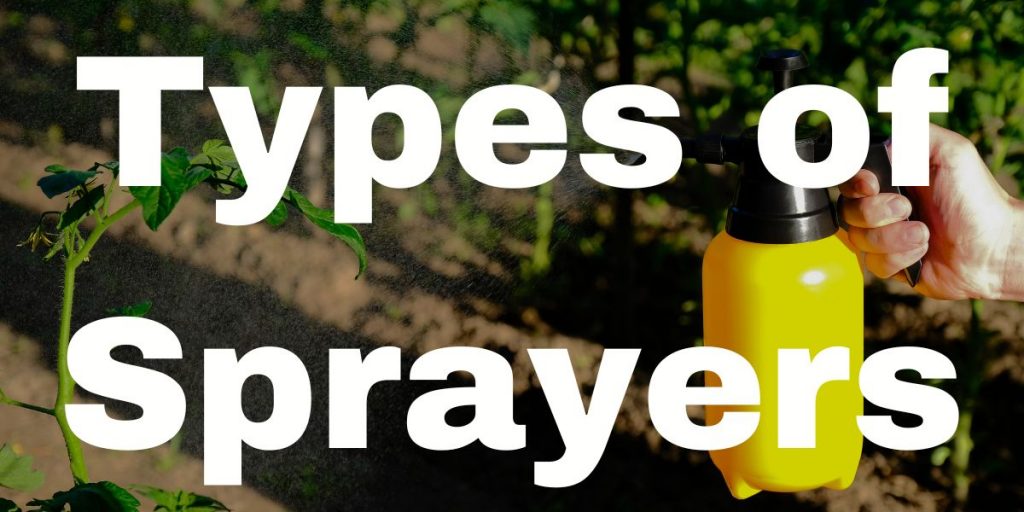In an average year, especially during the summer, one or more types of sprayers will be used by the average home gardener. Of the many products available, it is important to select the most efficient and easiest type for your particular need, whether it be for applying insecticides, fungicides, weed killers, liquid fertilizers or wetting agents. For example, lawn sprayers are made especially for the application of liquid materials to the lawn area. They are metered to allow quick mixing and a coarse spray., so it does not take as long to apply weed killers, insecticides, etc. Also, there is not as much chance of drift of the liquid into nearby flower and shrub beds.
The old saying, “You get what you pay for” certainly applies to sprayers. Efficiency and accuracy vary considerably, especially with the type that attaches to the garden hose.
Sprayers that have adjustable nozzles are the most satisfactory for most garden spraying. You should be able to change the distance the spray will carry and vary the coarseness of the spray, to make the tool as versatile as possible.
Sprayers that are used for weed-killing or for applying any type of soil sterilant should not be used for any other purpose. In fact, you will find it a good practice to set a sprayer aside just for the lawn area. Use a separate one for flowers and shrubs.
It is a good practice to clean out your sprayer immediately after you have used it for any type of spraying. A little soapy water, swished around and through the sprayer, then flushed out with warm water, does a good job.
The following are the most popular types of sprayers and dusters used in day to-day gardening:
Hose Sprayers – fit on the end of the garden hose. They make from one to fifteen or more gallons of spray, depending on the model you select. The hose water is metered and mixes with the spray solution when you turn on the hose. This type is popular with the home gardener because it is easy to use. Many have adjustable nozzles, permitting the use of a fine or coarse spray.
Water pressure often determines the distance the spray will carry. Some types may reach up to twenty feet or more. Unfortunately, their accuracy sometimes is not the best. To check accuracy, spray into a container, then measure the amount until all the spray is used up. You are limited in use only by the availability of water pressure and the length of your garden hose.
Tank Sprayers – can be used in any part of the garden because they are self contained. Most varieties make between one gallon and three and one-half gallons of spray. They usually have a sling attachment so you can adjust the sprayer over your shoulder or on your back and carry it anywhere in the garden or orchard. Most all of them are pressurized, so you can pump up the pressure and spray for a considerable time before re-pumping. Adjustable nozzles, ease of mixing and efficiency ,make this a popular type of sprayer.
Trombone Sprayers – are tubular and have a sliding., trombone-like movement. They are accurate, efficient and rather easy to operate. The spray is mixed into a container and then is carried to the spraying location. The weighted hose of the sprayer is lowered into or attached to the container. ., The spray is distributed by a hand pumping action. Adjustable nozzles regulate distance and type of spray desired. The one common mistake is to pump too hard; an easy, slow action should be used. Mix and use as little or as much spray as you need.
Hand-pump Sprayers – make from a pint to a quart of spray and this is often the answer for a small spraying job. Keep one handy for that single rose bush, etc. Nozzles on some are adjustable and some are pressurized.
Aerosols – many of the major companies now package insecticides and various other products in aerosol containers. These are especially handy for small spraying jobs. The distance the spray will travel and the coarseness of the mist are predetermined on most all types. Keep them out of reach of the children. Hold the can at least eighteen inches away from any plant you are spraying or the carrier is apt to burn the foliage.
Squeeze Dusters – are soft plastic containers that you simply squeeze to get a puff of the powdered material to flow from it. They are very handy., but sometimes are not too efficient. Often used when you have just a few plants to take care of.
Hand Dusters – are not as common as other types of applicators, probably because powdered materials are not used as frequently as liquids. Nevertheless, they are handy and quite efficient. Surplus material is simply returned to the original container. It does not have to be discarded or wasted.
Whatever your spraying job, select an efficient, easy-to-use sprayer that serves your needs best. Always remember to mix and use all weed killers, liquid fertilizers, insecticides, fungicides and wetting agents only as directed on the label of the brand you use.
